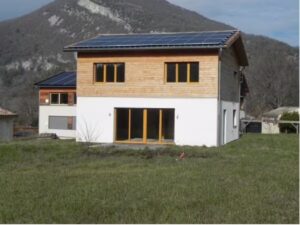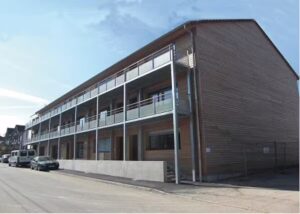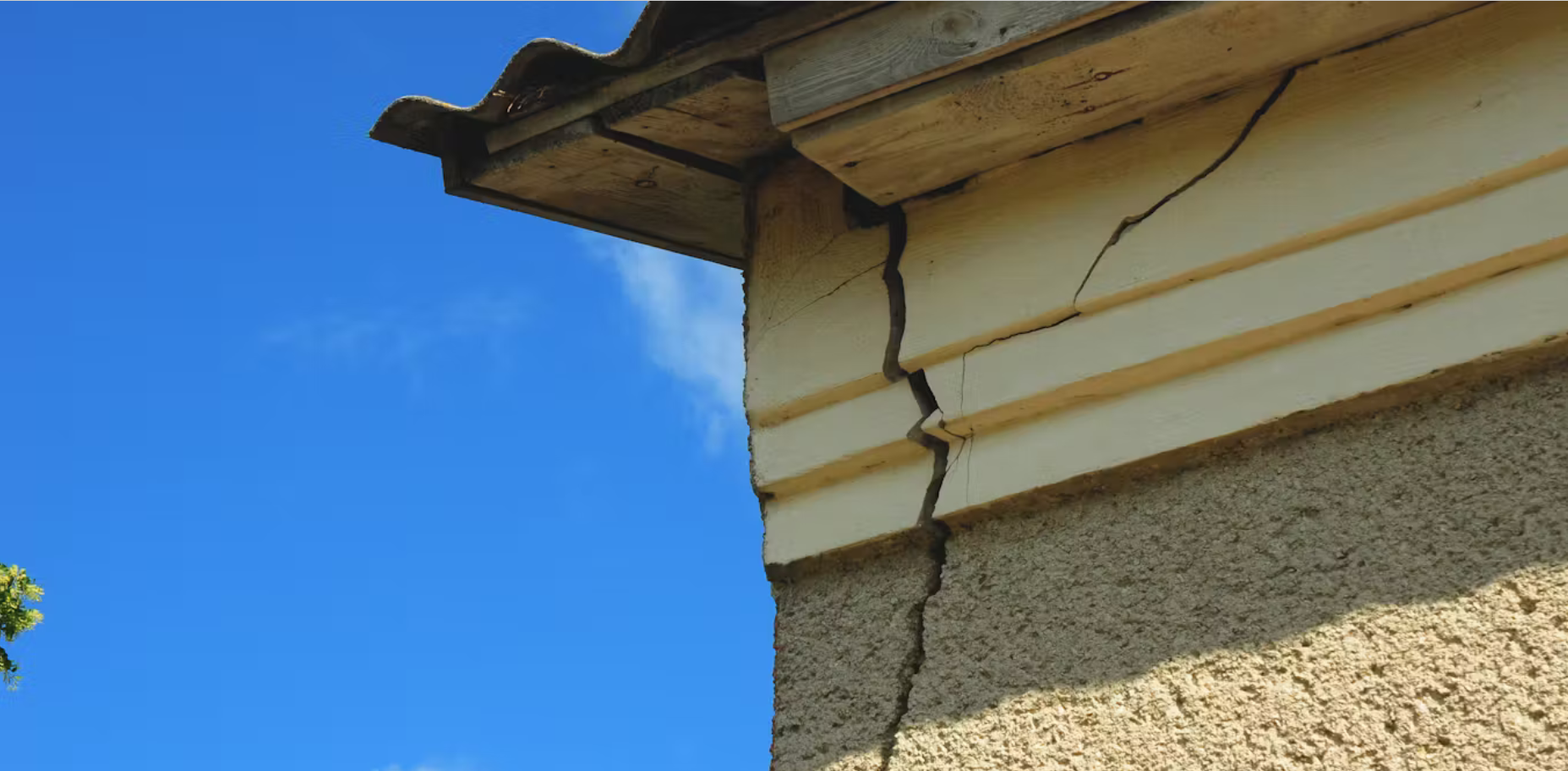Can the DPE help housing units comply with the Paris Agreement?


The residential-tertiary sector accounts for 23% of France’s carbon footprint. Under these conditions, there is an urgent need to apply the Paris Agreement, signed in 2015 to limit global warming to +2°C – or even +1.5°C – in the housing sector.
This is all the more crucial given that the 2025 budget for public renovation aid has been cut by one billion euros compared to 2024.
However, climate-friendly housing that produces more energy than it consumes already exists. Could this be used as a guide for energy renovation?
What is the current carbon footprint of housing? Let’s start by taking stock of the situation: there are around 30 million main residences in mainland France, 56% of which are single-family homes and 44% of which are apartments.
An energy performance diagnosis (DPE) assesses an energy label ranging from class A (the most efficient) to G. In fact:
The energy label has two indicators:
To take account of the fact that the GHG label of a dwelling may differ from its energy label, and that occupants do not necessarily heat their entire dwelling all day long, consumption has been corrected using actual data on consumption of gas, electricity and fuel oil for the housing sector. Even if there is a significant margin of uncertainty, these labels thus make it possible to obtain an order of magnitude for the energy consumption of the housing stock.
To calculate their GHG emissions, we took into account the emission factors (amount of CO2 emitted into the atmosphere per kilowatt-hour of energy consumed) of the different energy sources used for heating, domestic hot water and other uses. Most homes are heated by gas or electricity, but 20% of homes still use fuel oil and 7% use wood, while district heating supplies 10% of apartments.
Ultimately, taking into account the electricity imports required during peak periods corresponding to cold winter days, the total GHG emissions from housing – which include all heat and electricity consumption – are in the order of 60 million tons of CO2 equivalent per year (2022 figures). That is almost one ton per inhabitant.
Are these greenhouse gas emissions compatible with the objective of the Paris Agreement? To find out, we need to go back to the carbon budget assessed by IPCC researchers, which corresponds to the additional carbon emissions that give a 50% probability of limiting warming to less than 1.5°C.
At the beginning of 2023, this global budget amounted to 250 billion tons of CO2 equivalent. If we divide this carbon budget among the different countries in proportion to their respective populations, this amounts to two billion tons for France.
How much of this budget can be allocated to housing? Let’s do the math based on current figures: the building sector accounts for 23% of GHG emissions in France, of which two thirds are related to housing – housing thus represents 15% of the country’s overall carbon footprint. The carbon budget available for housing therefore amounts to 300 million tons of CO2 equivalent.
At the current rate of emissions estimated above, we will have consumed our budget in… five years. Of course, the oceans and forests can absorb some of the carbon emissions: we are talking about natural “carbon sinks”. Can these be sufficient to offset our emissions?
Scientists have assessed a GHG emissions threshold compatible with a warming of 1.5°C while taking these carbon sinks into account. This threshold corresponds to 0.5 tons of CO₂ equivalent per capita per year for all human activities. Considering that housing represents 15% of the overall carbon footprint, this leaves approximately 80 kg of CO2 equivalent per inhabitant per year for housing.
A result to be compared with the previous calculation, which showed that housing currently weighs approximately one ton of CO2 equivalent per year and per inhabitant. In other words, carbon sinks are not enough to compensate for the current carbon footprint of housing.
Is it possible to design a home that meets this requirement? To answer this question, we studied an exemplary project, built in Pont-de-Barret (Drôme) by the engineer Olivier Sidler.

“La Poutinière” house in Pont-de-Barret (Drôme), photo Olivier Sidler.
The very high level of insulation in this house almost eliminates the need for heating, and electricity is produced by a photovoltaic system. The life cycle analysis we conducted on this dwelling made it possible to quantify GHG emissions from the manufacture of the materials to the end of the building’s life. The construction makes extensive use of bio-based materials, including wood, which absorbs CO2 during its production in the forest. We also considered that the electricity coming from the grid would be progressively decarbonized until 2050, in accordance with the National Low Carbon Strategy (SNBC)
Considering that this 106 m2 house will be occupied by four people, the threshold calculated previously is respected. Its cost is also the same as that of social housing in the same region: 1,830 euros excluding tax per habitable square meter, plus 130 euros per habitable square meter for the photovoltaic system.
So there is good news: it is technically possible to build sustainably.
But what about existing buildings, some of which are old?
To have a chance of complying with the Paris Agreement, comprehensive renovations are needed to get as close as possible to the performance of the house presented above.
This means insulating the walls, ceilings and, if possible, floors, installing double or triple glazing, energy-efficient equipment (heat pump, wood-fired boiler or district heating, etc.) and ventilation.
This is what was achieved, for example, in the building opposite, renovated in 2010 in Raon-l’Étape (Vosges) at a cost of €1,116/m2.

1950s apartments in Raon-l’Étape (Vosges), renovated in 2010 to passive standard. Véronique Boehm, Propassif.
In the renovation program for the stock in question, the principle is to start with the least efficient buildings (classified G then F, etc.). This scenario has been simulated over a period of 42 years.
Why 42 years? Unfortunately, it is not possible to renovate France’s 30 million homes in less than five years: 700,000 renovations per year is considered the upper limit, given the capacity and skills of the companies. This leads to a period of 42 years to renovate the entire housing stock.
This calculation, even if it is tainted by uncertainties linked to energy labels and a very simplified modeling of the housing stock, leads to several results that are instructive in terms of their orders of magnitude.
GHG emissions related to renovation work (manufacture and installation of insulation, including some bio-based insulation, glazing and high-performance equipment) are in the order of 50 million tons of CO2 equivalent. They therefore fall within the carbon budget available at the beginning of 2023. And after 42 years of work for the entire housing stock, a carbon-neutral balance can be achieved.
This renovation is therefore possible, but there is some bad news, because the carbon emissions of the housing itself must also be taken into account – and not just those of their renovation – which deplete the available carbon budget in just seven years. The cumulative greenhouse gas emissions over 42 years are approximately 900 million tons of CO2 equivalent, three times this budget.
Furthermore, not all homes can be renovated to this level of performance: it is sometimes difficult to insulate floors or eliminate thermal bridges (interruption of insulation, for example around a floor). The cost of such renovations can reach several tens of thousands of euros for a class G home, which of course constitutes an obstacle, hence the importance of public aid.
The renovation of the housing stock has started too late: at the current rate, even a carbon budget of 2°C of warming will be exceeded.
However, there is still hope of respecting this budget: to do so, 400,000 homes per year must be renovated to performance class A. This poses a challenge in terms of training for companies and project owners as well as public aid.
But this challenge must be taken up, because we are already seeing the consequences of a warming of 1.5°C, reached in 2024 (but not yet on a ten-year average). In the long term, many buildings will no longer be insurable due to excessive risks, not to mention the energy insecurity that will increase with energy prices. The frugality associated with the behavior of residents is to be encouraged, but it will not be enough.
Renovation also provides protection from increasingly severe heat waves, because thermal insulation also protects against the heat. It is not enough to plant a few trees in cities; high-performance insulation is necessary. The idea that it is enough to electrify all energy uses and revive nuclear power is also a delusion, particularly because of the peaks in demand generated by heating, which would require a considerable investment in electricity production capacity.
There is therefore still time to limit the catastrophe: more efficient renovation is possible, and even necessary, to preserve a livable planet.

With global warming, more and more homes are affected. When built on clay soils, which swell and shrink according to the water they contain, cracks ca...